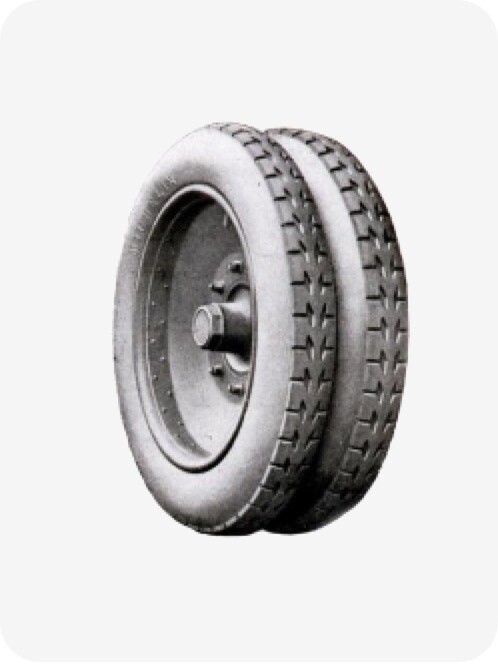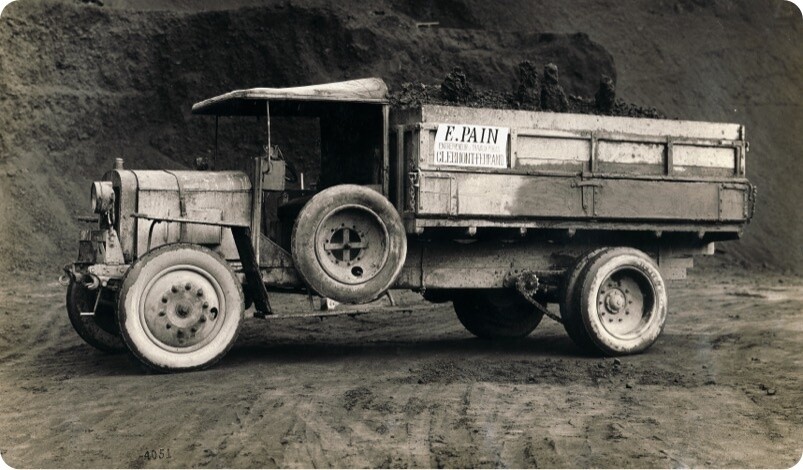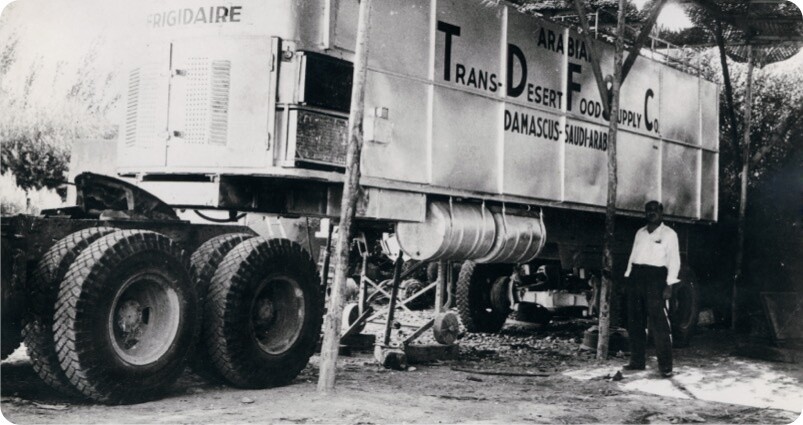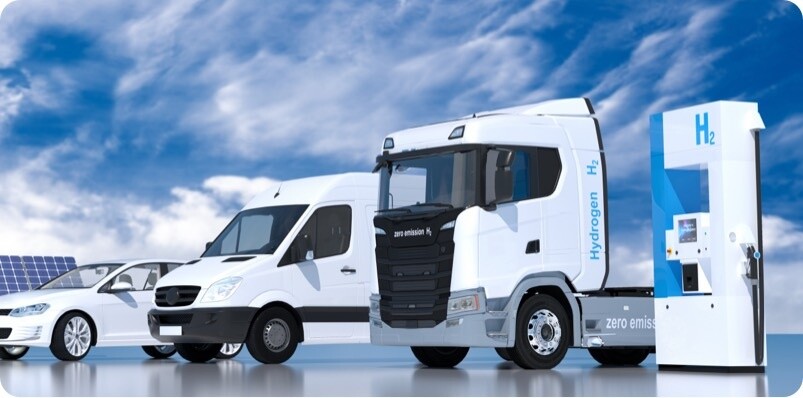
post hero banner rolling through
Whoever said that we don’t need to reinvent the wheel, didn’t know anything about tyres! For more than a century, Michelin innovations have been game changers in the transportation industry. The company’s tyre design and technology have helped truckers haul safer, faster and more efficiently. Read on for some key landmark moments in history.

post 1908 rolling through

post 1908 img a rolling through
Twin tyre Michelin - 1910's - © Collection du Patrimoine Historique Michelin

post 1908 img b rolling through
Le mille-pattes, producer Daniel Matthieu - 1970 - video extract © MICHELIN - LDD
1908 Doubling the Payload
Can you imagine hauling cargo on thin wooden wheels? In the 1900s, it was the industry standard ౼ that is until Michelin introduced the iconic twin tyre on drive axle and changed the face of the truck transportation industry forever. Soon after, the Berliet M, the first truck of the modern era, was outfitted with twin tyres and truckers could haul as much as 3,000kg. While that may not seem like much compared to today’s semi-trailers, the invention more than doubled payload!

post 1923 rolling through

post 1923 img rolling through
Truck of the company E. Pain in Clermont-Ferrand-France. Michelin twin tyres at the rear and chain drive. 1920 - © MICHELIN - LDD
1923 Out With the Old, In with the New
The practice of retreading first appeared in Michelin’s commercial documents in 1923. This practice, when worn out treads on old tyres is replaced with new tread extends the life of tyres ౼ and the budgets of truckers!

post 1930 rolling through
1930s When the Rubber Meets the Road
It’s true, when we think of tyres, we think big, black, rubber; but it’s actually the steel cords in the tyre casing that reinforce the structure. Michelin first put its metallic tyre to the test in 1937. Truckers were able to inflate tyres at considerably higher pressure levels, which meant heavier payloads and fewer blowouts and flats.
The 30s also mark the first time segmentation was seen in the tyre industry ౼ with tyres specifically designed for on-road, off-road and work environments.

post 1950 rolling through

post 1950 img rolling through
Truck transporting foodstuffs - 1950 - © MICHELIN - LDD
1950s Inventing a Classic
Do you know who invented the articulated tractor and semi-trailer? While the “real” origin is often debated (some say it was invented by the Germans, while others credit the Allies with the design), no one questions its utility! We still see this winning combo of freight-carrying semi-trailer and motorized tractor unit on the roads today.
Every trucker knows that resistance to weight, speed and road abrasion are key to hauling big payloads. In 1952, Michelin introduced the world to radial technology with the launch of Michelin X. The reinforced carcass doubled driving distance, offered excellent handling on various surfaces and significant fuel savings.

post 1960 rolling through
1960 Smaller Wheel, Bigger Gains
The 1960s ushered in the “Pilot Series 80” range, a pioneering launch of the first low profile tyres for trucks. The downsized sidewall made room for a bigger wheel and thus, more powerful brakes. This not only boosted overall vehicle safety, but the augmented breaking capacity also meant that truckers could haul heavier loads.

post 1970 rolling through
1970s Asked and Answered
More traction! Heavier payload! More torque! Truckers asked for it and Michelin answered with the Remix process. In addition to retreading tyres, the process replaced three to four layers of steel wires ౼ exploiting the full potential of the tyre carcass and saving customers money.

post 1986 rolling through

post 1986 img rolling through
Advertising promoting the MICHELIN XZT heavy duty radial tyre. 1980 - © MICHELIN - LDD
1986 Another downsize, with a big upside
Listen carefully because this one is a bit complicated. The Michelin XX was the first ultra low profile tyre. While the wheel size remained unchanged, the lower sidewall reduced the total height of the tyre. This meant semi-trailer cargo space could expand without increasing the overall height of the truck. The increased freight volume improved transport efficiency and as an added bonus, the lower center of gravity increased truck stability as well.

post 1995 rolling through

post 1995 img rolling through
Japanese advertising promoting the “green tyre”. 1992 - © Collection du Patrimoine Historique Michelin
1985 Going Green
When fuel prices soared in the 90s Michelin stepped up to help truckers reduce their fuel consumption with a new innovation: the first ever green tyre. Energy, a range of low rolling resistance tyres was Michelin’s first commitment to sustainable mobility ౼ but far from its last!

post 2000 rolling through
2000s Revamping an Old Classic
With the new millennium, came a (not so) new tyre concept. Michelin replaced its iconic twin tyre with something we’ve seen before: a single tyre. But the revamped, wider X-one tyre, with two side walls instead of four, significantly improved stability, reduced rolling resistance and helped truckers increase their payload.

post 2016 rolling through
2016 Grade A Tyres All Around
Just like refrigerators and other appliances, tyres have an environmental rating system, too. In 2016, Michelin rolled out its top of the line AAA tyre. For the first time, trucks could have grade A tyres in all three positions: steer, drive and trailer. In order to earn its rating, Michelin had to design a tyre with very low rolling resistance, and thus significantly lower CO2 emissions. And while Michelin zeroed in on rolling resistance, it made sure that the AAA didn’t impact other key performance factors such as wet grip breaking or rolling noise.

post 2020 rolling through

post 2020 img rolling through
Hydrogen-powered truck - new innovation - © MICHELIN 2020 - LDD
2020s And beyond
With electric and hydrogen powered vehicles on the rise, Michelin has been hard at work preparing for a major energy transition. Many new innovations and technologies are in the works and ready to roll out...stay tuned!

gettyimages 930571046
car going fast on a road by night






